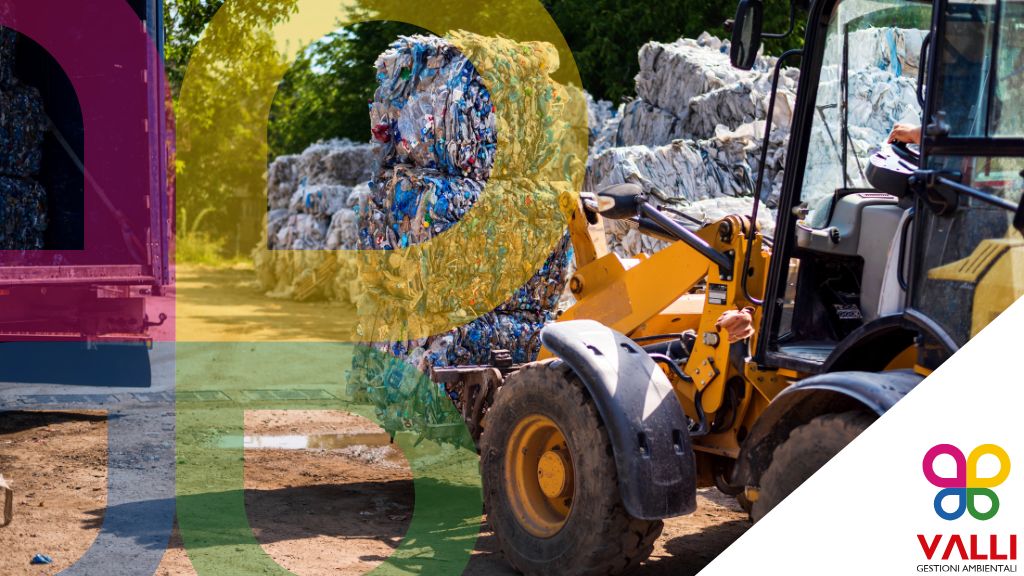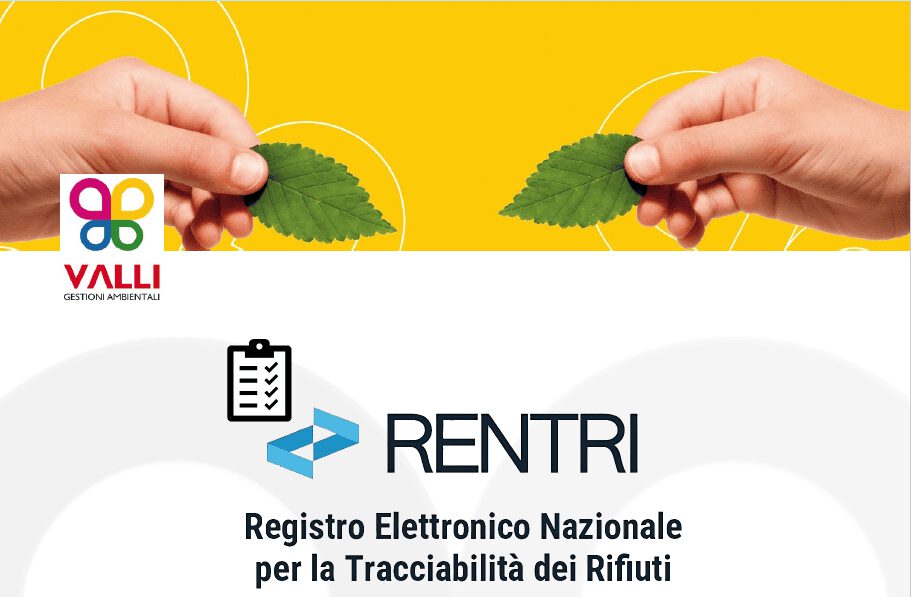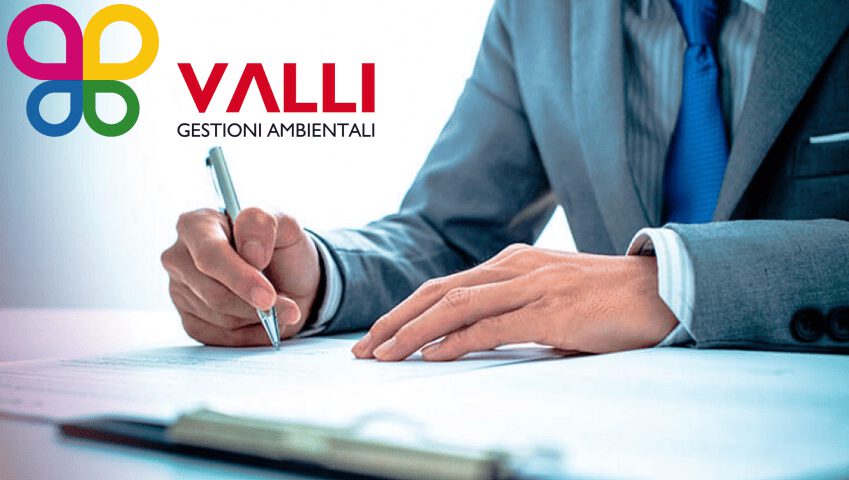Waste management for SMEs is a major challenge for small and medium-sized enterprises, which often need flexible and customized solutions to properly deal with the collection, transport and disposal of special waste produced daily. In particular, companies such as workshops and small production activities must comply with waste management regulations and ensure proper disposal, even when ADR transport is necessary for hazardous waste. Let’s find out how to optimize these processes efficiently and in compliance with current regulations.
What is industrial waste? and why waste management is important for SMEs
Industrial waste includes all those discarded materials produced as a result of manufacturing processes, industrial operations, and production activities. Their classification is based on criteria that include the type of material, the hazard and the potential environmental impact. This waste is generally divided into two main categories: hazardous and non-hazardous.
Proper waste management allows SMEs to reduce their environmental impact and avoid legal penalties related to regulatory violations. In addition, an organized system improves operational efficiency, reduces disposal costs, and helps build a responsible and sustainable image of the company. SMEs must take responsibility for properly managing both hazardous and non-hazardous special waste, in full compliance with the law.
Rely on experts in the field. When it comes to hazardous waste, you should know that it contains substances that can be harmful to the environment and human health, such as toxic chemicals, flammable or corrosive materials. The correct management of this waste makes it imperative to choose a professional disposal company.
Classification
Let’s now take a closer look at what the types of waste are. The classification of industrial waste is essential to ensure proper disposal and treatment in line with current environmental regulations. Industrial waste can be classified in different ways, based on its origin, chemical composition, and hazardousness. Here are the main criteria used to classify industrial waste:
- By origin
I rifiuti sono classificati in base al processo o settore industriale che li ha generati. Esempi includono:
- Waste from industrial production (e.g. processing waste)
- Waste from agricultural activities (e.g. pesticide residues)
- Construction and demolition waste (e.g. concrete, bricks)
- Medical waste (e.g. materials contaminated by medical practices)
- By composition
This classification concerns the physical, chemical or biological nature of waste:
- Organic waste (e.g. food waste, plant residues)
- Inorganic waste (e.g. metals, plastics)
- Chemical waste (e.g. solvents, acids)
- Radioactive waste (radiation-emitting materials)
- By hazard
Waste can be classified as hazardous or non-hazardous based on the potential risk it poses to human health and the environment. Criteria include toxicity, flammability, corrosivity and reactivity:
- Hazardous Waste: Contains hazardous substances and can be harmful. Examples include waste containing heavy metals such as mercury and lead, or toxic chemicals.
- Non-Hazardous Waste: This is generally considered less harmful and includes materials such as paper, untreated wood, and certain types of plastic.
- EWC code (European Waste Catalogue)
In Europe, waste is further classified according to the European Waste Catalogue (EWC), which assigns a specific code to each type of waste, facilitating the standardisation of management and disposal practices across the European Union.
The correct classification of industrial waste is essential to choose the appropriate treatment and disposal strategies, and to ensure that companies comply with environmental laws and regulations. This process helps to minimise the environmental impact of industrial activities and promotes more sustainable resource management.
Industrial waste reduction
Reducing industrial waste starts with optimizing production processes to minimize the generation of waste. A detailed analysis of operations can reveal opportunities to improve efficiency and reduce material consumption. For example, implementing advanced manufacturing techniques, such as additive manufacturing, can significantly decrease the waste produced. In addition, training staff on the importance of waste reduction practices can raise awareness and improve the effectiveness of environmental policies adopted.
Another fundamental aspect is the adoption of innovative technologies for the treatment and recovery of waste materials. Investment in advanced filtration systems and state-of-the-art recycling solutions enable companies to turn waste into resources, contributing to the reduction of the industry’s ecological footprint.
Standards for the disposal of industrial waste
The disposal of industrial waste is regulated by a complex set of regulations both nationally and internationally, which aim to protect the environment and ensure public safety. Here are some of the main rules and regulations that companies must comply with when disposing of industrial waste:
- EU Directives: The European Union has established strict waste directives, including the Waste Directive (2008/98/EC), which sets out the basic principles of waste management, promoting prevention, recycling and the efficient use of resources. In addition, specific directives such as the Hazardous Waste and Landfill Directives set standards for safe treatment and disposal.
- REACH Regulation (EC No. 1907/2006): This regulation manages the use and marketing of chemicals within the EU, influencing the way chemical waste is managed and disposed of.
- Basel Convention: At the international level, the Basel Convention regulates the transboundary transport of hazardous waste and its disposal. This convention aims to prevent the transfer of hazardous waste from developed countries to developing countries.
- National regulations: Each country has its own laws and regulations for waste management. For example, in Italy, Legislative Decree 152/2006 (Consolidated Environmental Act) establishes regulations for the management of waste, including industrial waste, dictating guidelines for the collection, treatment, recovery and disposal of waste. This decree introduces the concept of waste hierarchy which defines the priority criteria for waste management: prevention; preparation for reuse; recycling; recovery of other types such as in the case of energy recovery; disposal.
- Environmental compliance certifications: Regulations such as SO14001, which provide guidelines for environmental management systems, are crucial for companies looking to demonstrate their commitment to responsible waste management.
For companies, compliance with these regulations is not only mandatory by law, but it is also crucial to avoid fines, protect the environment and improve their reputation and corporate sustainability. Therefore, it is essential to stay up-to-date on any changes in legislation and to cooperate with regulators and industry specialists to ensure compliance.
Efficiency in production
Increasing efficiency in production means not only optimizing the use of resources but also reducing the amount of waste generated. Implementing integrated management systems (ISO 14001, for example) can guide companies in identifying inefficiencies and improving the sustainability of their operations. These systems promote a holistic approach to environmental management, integrating pollution prevention, waste control, and resource conservation practices.
Product Life Cycle Analysis (LCA) is another crucial tool that helps companies understand the environmental implications of their products, from production to end-of-life. Through LCA, companies can identify critical points where waste can be reduced or eliminated, improving the overall sustainability of the production process.
Sustainable practices in industry
Implementing sustainable practices requires a long-term commitment to innovation and environmental responsibility. A key element is the green purchasing policy, which favors suppliers and materials that comply with strict sustainability criteria. This not only reduces the environmental impact but also encourages the entire supply chain to adopt different strategies for waste reduction, such as industrial waste treatment and recovery.
In addition, environmental certification can play a vital role in ensuring that industrial practices are sustainable. Certifications such as LEED or BREEAM evaluate industrial buildings for their energy efficiency and environmental impact, providing a regulatory framework to continuously improve operations.
Micro-waste collection: a practical solution for SMEs
Micro-waste collection is a system designed specifically for the needs of SMEs, which allows small quantities of special waste to be collected in a simple and regular way. This method reduces the need for large temporary storage facilities and promotes a leaner and more sustainable management cycle. Micro-collection is particularly useful for workshops and small businesses with limited waste production, always ensuring regulatory compliance.
ADR transport: when it is necessary and how to manage it
ADR transport applies to hazardous waste and requires SMEs to use means and procedures that comply with European legislation on the transport of dangerous goods by road. It is fondamentale che il personale coinvolto sia formato e che la documentazione sia completa e corretta per evitare sanzioni e garantire la sicurezza durante il trasporto.
How to choose a waste management service suitable for SMEs
To optimise waste management, SMEs need to rely on experienced partners who offer tailor-made services that can be adapted to specific production and regulatory needs. The choice of a reliable company like BG Valli Ambiente allows you to benefit from complete support: from micro-collection to transport, up to the treatment and final disposal of waste, with an eye always attentive to current legislation.
Conclusions
Optimising waste management for SMEs means adopting effective, flexible solutions that comply with environmental regulations. BG Valli Ambiente supports small and medium-sized enterprises with customized services, ensuring safety, efficiency and sustainability in the management of special waste, with particular attention to micro-collection and ADR transport.
Contact us today for a personalized consultation and find out how to improve waste management in your SME!
FAQ
- What does micro-waste collection mean and why is it useful for SMEs?
Micro-collection is a system for the frequent and targeted collection of small amounts of special waste, ideal for SMEs that produce limited amounts of waste. It facilitates easier and more compliant management without having to accumulate large quantities in the company. - What are the regulatory obligations for waste management in SMEs?
SMEs must comply with national and regional regulations governing the classification, collection, transport and disposal of waste, including traceability obligations, loading and unloading registers and obligations relating to ADR transport for hazardous waste. - When is ADR transport necessary for SMEs?
ADR transport is mandatory for the transport of hazardous waste by road. SMEs must ensure that transport takes place with compliant vehicles and trained personnel, respecting all the safety standards provided for by the European ADR agreement. - How can the collection and disposal of special waste be optimised?
Optimisation means adopting micro-collection systems, choosing reliable partners for transport and treatment, keeping documentation up to date and strictly complying with current environmental regulations. - What characteristics must a waste management service suitable for SMEs have?
A good service must offer flexible and customized solutions, ensure regulatory compliance, ensure safety in transport (including compliance with ADR transport) and provide complete support from collection to final disposal.




